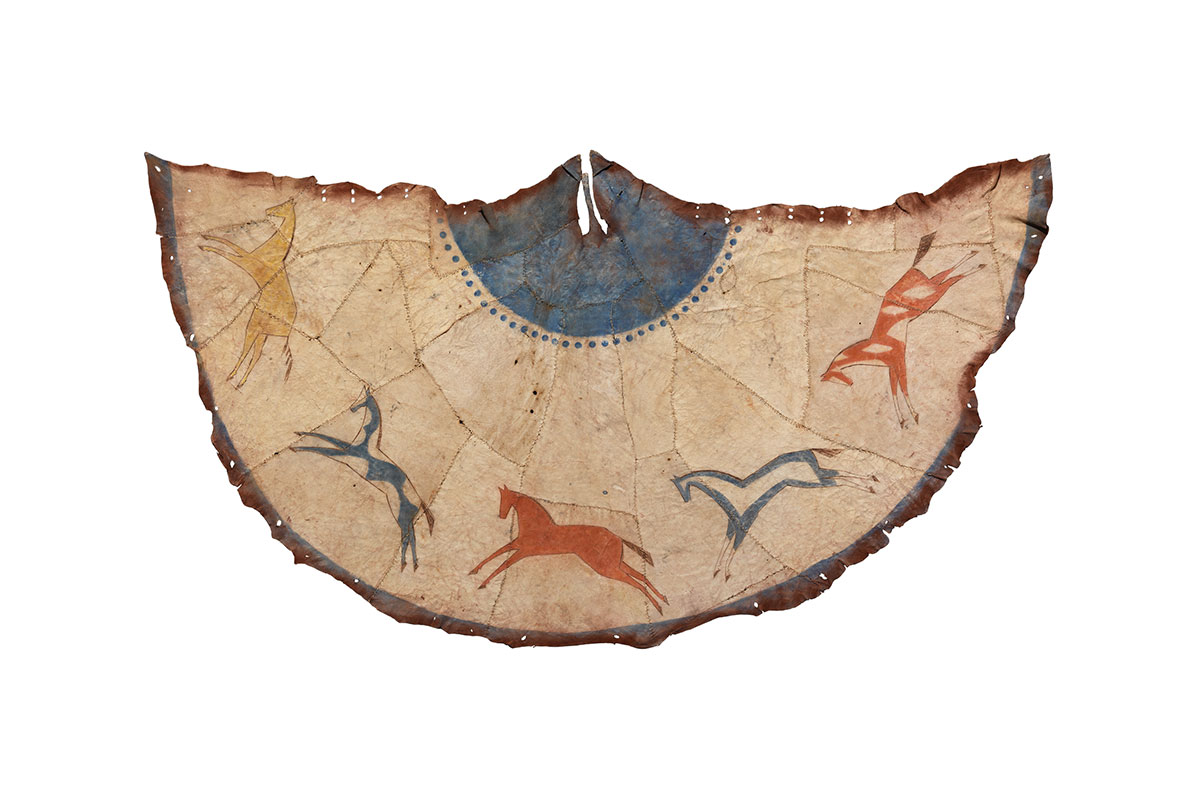Model Tipi Cover
Central Plains
ca. 1860
hide, paint, sinew
height: 31 ½"
width: 57"
Inventory # P4163
Sold
acquired by the Toledo Museum of Art, Toledo, OH
RELATED EXAMPLES
Maurer, 1992, pages 139 and 149
Tipis are one of the most recognizable features of historical life on the Great Plains and Canadian Prairies. Quickly disassembled and packed away, their portability supported a nomadic lifestyle. The majority of tipis were made of plain hide and wooden poles. A small number exhibit carefully painted designs such as horses, deer or buffalo. Judging by stylistic features of construction and the horse design, the present tipi was painted by an anonymous Cheyenne warrior-artist. The blue central design represents the night sky and is surrounded by five exceptionally painted horses. Horsepower was decisive in hunting success and battle and horse-raiding a primary activity for articulating social status. Often considered sacred, horses were celebrated with origin myths and associated with medicinal power.
To be elected the owner of a painted tipi was a high honour that came with great responsibility and ritual obligations. Frequently associated with specific ceremonies, these tipis housed certain medicine bundles. Since its medicinal powers benefited the entire community, it was the owner's duty to safeguard the tipi and its contents.
In the early reservation period, attentive artists began recognizing foreign interest in traditional art and crafts. Model-sized tipis were made for sale to government officials, military personnel, anthropologists and missionaries. The present model is highly unusual, being composed of smaller sections of hide stitched together in the manner of a full-size tipi cover.



